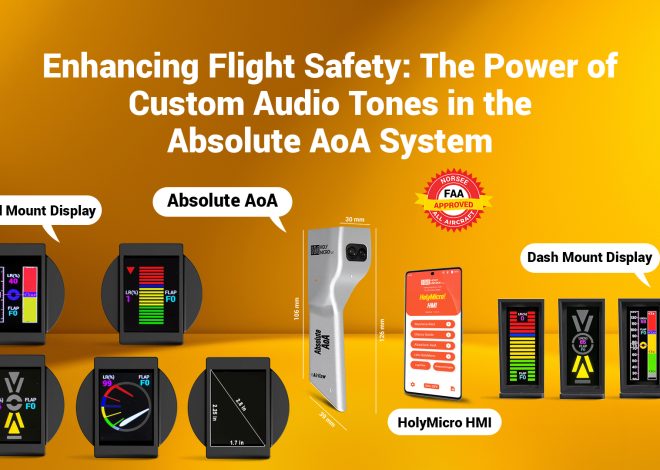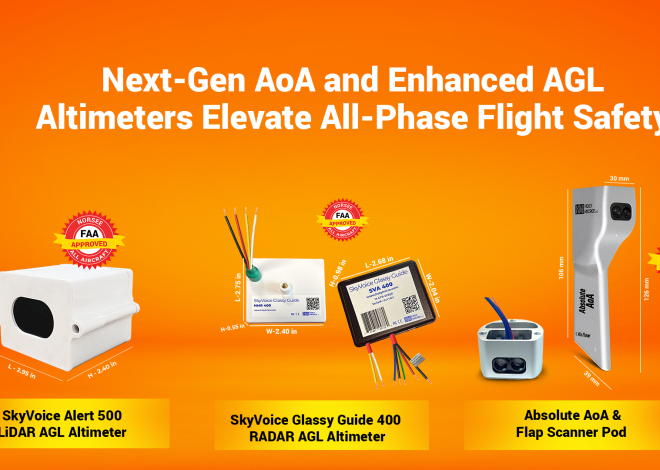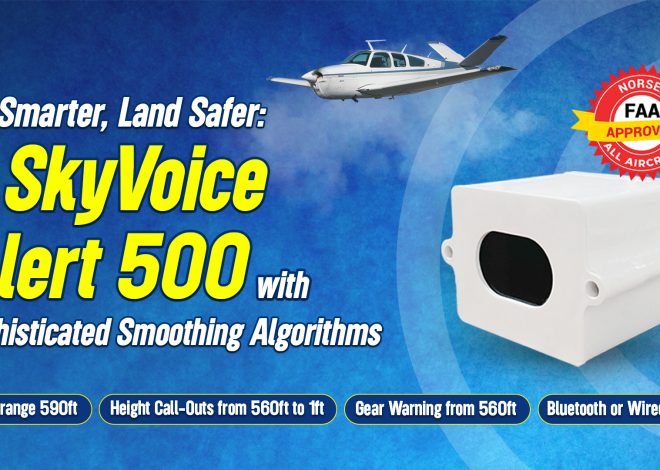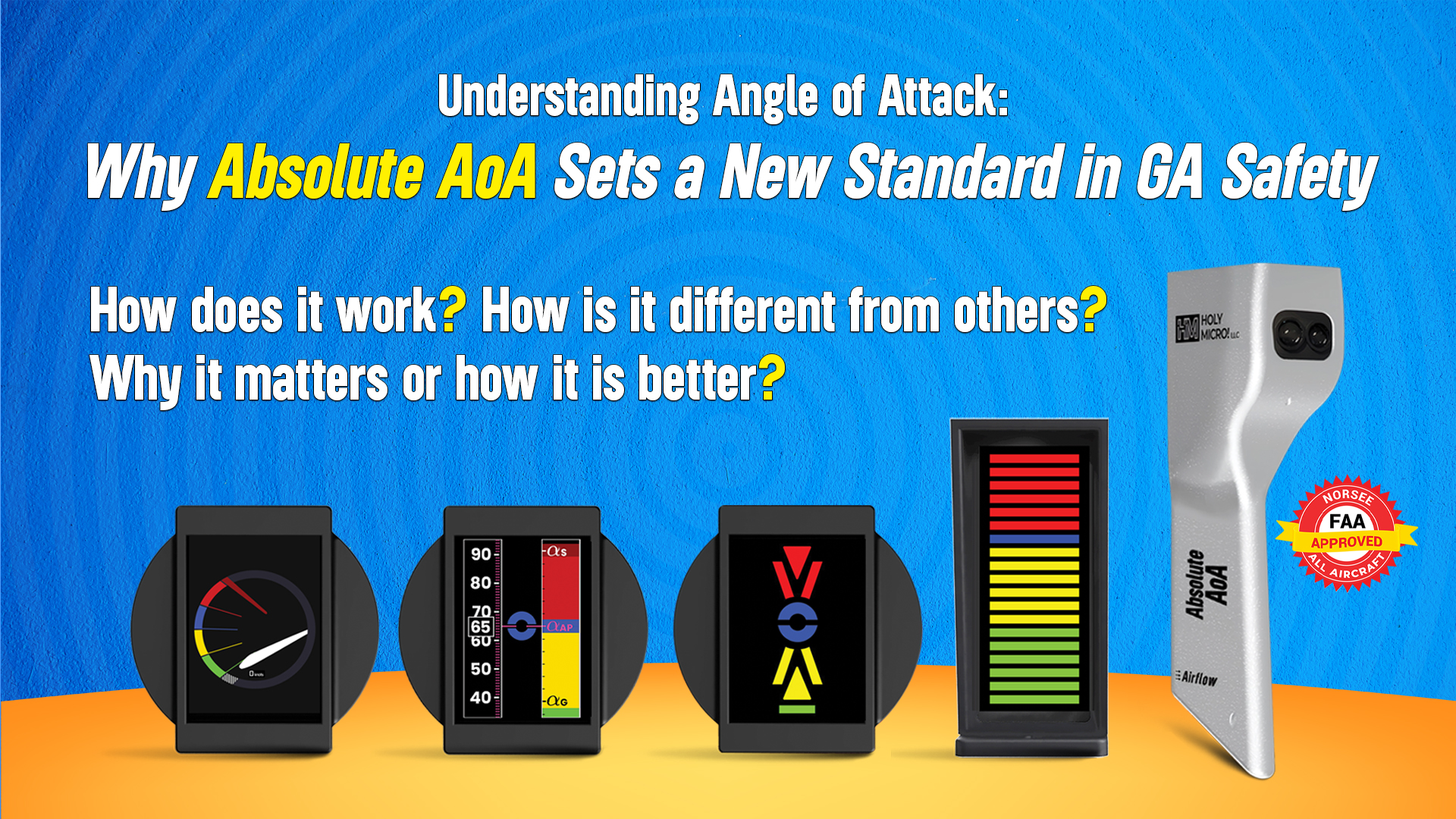
Understanding Angle of Attack: Why Absolute AoA Sets a New Standard in GA Safety
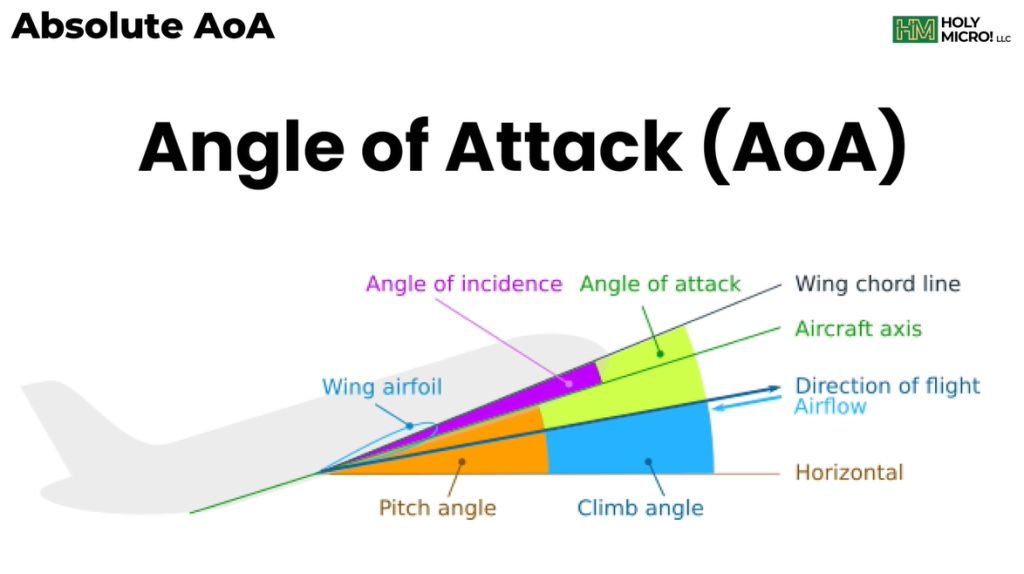
What is Angle of attack?
It is defined as the angle between the chord line of an airfoil and the direction of relative wind.
Angle of Attack is related by a simple formula –
Pitch Attitude + Angle of Incidence = Angle of Climb + Angle of Attack
Importance of Angle of Attack
Most of the airplane’s critical performance numbers are more closely related to angle of attack than to anything else.
This is the most important point in understanding the concept of Angle of Attack.
Many of the airplane’s critical performance numbers are really angle of attack numbers:
- The stall occurs at a particular AoA.
- The smallest power-off descent rate occurs at a particular AoA.
- The best power-off glide ratio occurs at a particular AoA.
- The recommended “approach speed” is really an angle of attack recommendation.
- The best rate of climb occurs at a particular AoA.
- The best angle of climb occurs at a particular AoA.
Angle of Attack Systems
Current differential pressure angle of attack systems for light general aviation aircraft concentrate on the low speed/high angle of attack regime. Typically, outside of this flight regime, these angle of attack systems are inaccurate. Hence, they are unusable for critical flight regimes other than the stall region.
1. How does it work? How is it different from others?
FAA Approved Absolute AoA’s Precision Pressure Sensing Technology
1) High-Resolution Pressure Measurement
At 200 knots (343 ft/sec) under standard sea level conditions:
- Dynamic pressure (q) at the forward/impact port: ~1 psi (6,900 pascals)
- Our high-accuracy sensor detects pressure changes as small as 1 pascal:
Resolution equivalent to 1/6,900th of 1 psi
Represents 0.05 ft/sec (0.03 knots) velocity sensitivity
Why This Matters
✔ Unmatched Precision: Resolves aircraft speed changes as small as 0.03 knots
✔ Critical for Safety: Detects minute aerodynamic changes before they become hazardous
✔ Stable Calibration: Maintains accuracy across all flight conditions
2) Normalized vs. Differential Pressure – Why Two Sensors Matter
All pressure sensors are differential—they measure pressure relative to a reference.
Many AoA systems use only one sensor, claiming “differential pressure” output. However:
A single sensor provides only one pressure reading, making it difficult to establish a meaningful AoA relationship.
Most competitors do not disclose their sensor specs (manufacturer, accuracy, or resolution).
Absolute AoA’s Solution:
Two high-quality, U.S.-made pressure sensors by T.E. Connectivity to independently measure pressure at forward port and 45° port.
Both measure pressure against a shared static reference (blue hose).
This dual-sensor approach ensures consistent, speed-independent AoA calculations
Absolute AoA (Pressure Ratio)
Maintained near-consistent reading (1.92 → 1.98)
True AoA indication despite 45-knot speed reduction
Single-sensor systems give speed-dependent values, good only at low speed & high angle of attack. Absolute AoA’s normalized ratio remains consistent regardless of airspeed—delivering true angle of attack.
Why This Matters
Independent of change in airspeed or air density—AoA stays accurate at any speed and any density altitude.
Eliminates false warnings caused by speed variations or density altitude or weight.
Superior engineering with dual high-precision sensors.
In the following video, you can see how correlated Absolute AoA pressure reading is compared to differential pressure reading.
Conclusion:
The Differential Pressure System is susceptible to ambiguity in AoA determination.
It functions acceptably in low-speed/high-AoA regions, making it suitable for stall warning but not reliable as an AoA indicator.
2) Why Absolute AoA’s Dual-Sensor System Matters for Pilots
For the average GA pilot, Absolute AoA’s two-pressure-sensor design provides critical advantages over traditional AoA systems:
1) True Angle-of-Attack Awareness – At Any Speed
Absolute AoA warns you before exceeding critical AoA, regardless of airspeed.
Other AoA systems only alert you in slow flight, near their pre-calibrated speed—meaning you might miss early stall cues during maneuvering or unusual attitudes.
2) Fly Optimal Angles – Not Just Speeds
Label and calibrate key flight angles like:
Best Glide
Vx (Best Angle of Climb)
Vy (Best Rate of Climb)
Normal Cruise
Why angles matter more than speeds:
These angles stay constant, but the airspeed changes with weight, load, or density altitude.
A traditional airspeed-based system requires constant mental adjustments—Absolute AoA shows you the true aerodynamic state.
Calibration Stability in Absolute AoA
Once calibrated, your aircraft’s Angle of Attack (AoA) values remain constant—they do not change with:
- Weight variations
- Loading conditions
- Density altitude shifts
- Bank Angle
How It Works
During calibration, our Absolute AoA system: Captures each angle you fly. Map it to a corresponding pressure ratio (a unique aerodynamic fingerprint for that angle). This means:
Every calibrated angle is permanently tied to its specific pressure ratio.
The system does not require further recalibration for different flight conditions.
Key Benefits
✔ Consistent performance – Your AoA readings stay accurate in all scenarios.
✔ One-time calibration – No need to further adjust for weight, loading, or altitude changes.
✔ Precision reliability – Pressure-ratio mapping ensures repeatable results.
The Bottom Line
- Stall prevention that works in all phases of flight, not just slow flight.
- Fly precisely with angle-based references instead of memorizing speed charts.
- Confidence in changing conditions—whether heavy, light, high, or hot.
With Absolute AoA, you’re not just watching airspeed—you’re flying the wing.
Traditional AoA Systems Fall Short
Most other AoA systems have:
? No option to calibrate for different configuration
? None approved flap position inputs (extra wiring/sensors to flap switch or motor)
? Requires manual input from pilot increasing workload and memory dependence.
Absolute AoA’s Breakthrough: Automatic Flap Detection
Probe integrates LiDAR to scan your flaps in real time—no extra switches, wiring, or pilot input needed.
When you lower flaps, the system:
Detects the exact position
Instantly loads the correct pre-calibrated AoA profile
Maintains precision stall warnings for that configuration
Why It Matters
- No missed stalls during configuration changes
- No manual change when adjusting flaps
- True set-and-forget safety that adapts as you fly
- Finally—an AoA system that thinks like a pilot.
3) Is the Absolute AoA Probe Heated?
The probe does not come with a heating element nor is it part of our current certification, but your A&P may choose to add one. Before deciding, consider the probe’s design and mounting location:
Vertical Orientation – Unlike most AoA probes (which are horizontal or angled), the Absolute AoA probe is mounted vertically, with openings angled straight up. This prevents water from pooling, as any moisture drains away naturally.
Optimal Placement – While many AoA probes are installed near the leading edge, the Absolute AoA probe is recommended to be mounted farther back, closer to the wing’s center chord. This reduces exposure to ice and rain.
Given these design advantages, heating may not be necessary—but the option remains available to your A&P if desired.
4) Why Choose the Optional 5- Watt 8 ohm DO-160 compliant Voice
Range Speaker certified as part of the NORSEE approval with the Absolute AoA Kit from Holy Micro! LLC ?
In normal operations, you shouldn’t hear stall alerts often or at all—which makes it more critical that you must always hear them when they occur.
The Problem With AUX Audio:
Your aircraft’s shared audio channels (radio, intercom, alerts) can:
Drown out stall warnings
Delay alerts due to priority conflicts
Mute completely during other transmissions
The 5-Watt Speaker Advantage:
? Unmissable volume – Penetrates even noise-canceling headsets
? Dedicated alert channel – Never competes with other audio
? Simplified installation – No avionics shop required and no disturbance to your avionics stack/installation.
Just connect to power (no complex audio panel wiring)
5) Displays & Presentation Options in Absolute AoA?
Absolute AoA currently offer two display options, included in the package price. You may select your preferred model when placing an order:
- Dashboard-Mounted Display : Designed for easy mounting on the cockpit dashboard.
- 3 1/8″ Round Instrument Panel Display : Fits into a standard round cutout in your instrument panel.
Presentation (AoA Visualization Styles)
The Presentation refers to how Angle of Attack (AoA) data is displayed/presented on the screen. Our software allows you to select from the following visualization styles:
Barmeter Presentation
- A classic, intuitive display using horizontal bars to indicate AoA.
- Widely used for decades in aviation.
Chevron Presentation
- Features dynamic chevron (∧/∨) symbols and center donut that shift with AoA changes.
- Offers clear visual cues for pitch adjustments and need to remember them.
Performance Presentation (New Feature)
A modern “running tape” style that integrates:
- Labeled calibration angles (user-defined for your aircraft).
- Real-time airspeed data (pulled from Absolute AoA’s pitot-static ports).
Ideal for pilots seeking detailed performance metrics and less to remember.
The Barmeter and Chevron presentations are time-tested, while the Performance option provides advanced functionality for precision flying.
Don’t fly just any AoA; Fly Absolute AoA from Holy Micro!
